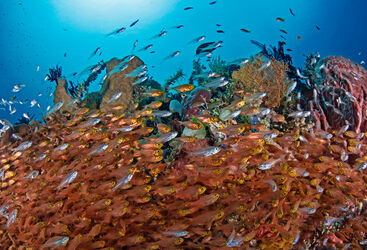Tell us what you want
Our thoughtful experts are ready with ideas, inspiration and advice for your next journey.
These wrecks are an ode to the Red Sea's historic role as one of the most important waterways in the world. Initially a trade route between Africa and Arabia, the narrow sea became even more integral to international trade following the creation of the Suez Canal in 1869. Nowadays, The Red Sea is like an underwater museum, with everything from World War II wrecks to merchant ships loaded with cars, tiles and even toilets. With so many wrecks to explore, it's no surprise that divers are drawn back to the region again and again.
The Red Sea is broadly split into two regions, the Northern Red Sea and the Southern Red Sea, each unveiling their own trove of wrecks to explore.
For those wanting to see the 'big ticket' wrecks, we'd recommend planning a trip to the Northern Red Sea to cover the most famous (as well as some incredible coral in Ras Mohamed Marine Park). While Southern Red Sea itineraries are mainly focused on pristine reefs and mesmerising marine life, there are some fascinating wrecks to discover, including the Tien Hsing tugboat wreck on the Abu Galawa Kebira reef and the Umbria wreck in Sudan.
Wherever you choose to dive, our top tip is to stay on a liveaboard. While it's possible to dive Egypt's wrecks from land, liveaboards enable you to dive multiple sites each day and access more remote locations. Let the underwater adventure begin.
There are a wealth of wrecks resting on Egypt's seabed, but some are more enticing than others. Read on to discover our recommendation for the top five wreck dives in the Red Sea:
The SS Thistlegorm is one of the world's best wreck dive sites. This British freighter, bombed by the Germans in 1941, now lies 30m deep in the waters of Sharm el Sheikh and contains a bounty of British military supplies, from tanks and arms to Wellington boots.
Carrying a cargo of wood, this 100m -long cargo ship met its watery demise after colliding with the Sha'ab Abu Nuhas reef (also known as the Reef of Seven Deaths, due to the whopping seven wrecks that lie there). Resting at 25m, Giannis D is carpeted in colourful corals and harbours a wealth of marine life, from moray eels to schooling barracuda.
The SS Carnatic, like the Giannis, also sank after colliding with the Sha'ab Abu Nuhas reef in 1869. One of the oldest wrecks in the Red Sea, this steam-and-sail powered clipper ship was carrying a precious cargo of gold when she sank, so look out and you may just find a coin (pretty unlikely, but it doesn't hurt to try!).
The SS Dunraven was carrying a cargo of cotton and spices before colliding with the southern end of the Sha'ab Abu Nuhas reef in 1876. The wreck now rests at a maximum depth of 25m and is broken into three parts, with an interesting swim-through passing two boilers and huge shoals of colourful fish.
This 100m -long cargo ship is yet another casualty of the Sha'ab Abu Nuhas reef, which sank in 1981 while carrying a cargo of floor tiles to Jeddah in Saudia Arabia. Now affectionately known as the 'Wreck of Tiles', the ship sits 28m down on the seabed, with much of its equipment still intact.






Our thoughtful experts are ready with ideas, inspiration and advice for your next journey.
Working with you we'll craft an unforgettable trip and tailored itinerary.
We're here to help with everything while you're away from the smallest to the biggest request.
Jacqui is our 'Wreck Diving Egypt' expert and as a seasoned traveller has the inside track on the most memorable adventures.
